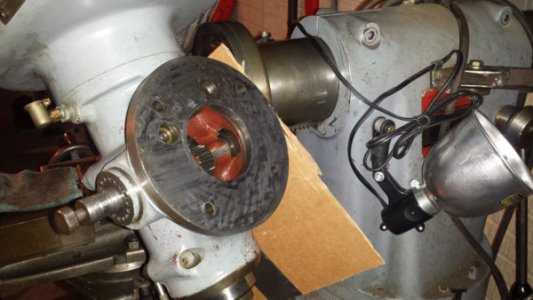- Joined
- Sep 21, 2017
- Messages
- 119
Update:
I'm a little disappointed, I must admit. I removed the head last evening and used the same stoning method that made some progress earlier in the week. The mating surfaces still show some 'frosting', but there are some suspicious looking sanding marks that I think may be someone else's attempt at squaring the head. The sand marks are not quite in the right spot, but I can't imagine any other reason someone would have done that.
Anyway, I worked pretty vigorously on both mating surfaces at the head mount with the honing stone, but to no avail. The same 2 thousandths of deviation remains. I'm eyeing the ways now, considering that I may have been too dismissive of them before. Not sure how to go about that... need to build up some courage before diving in to that.
Perhaps I'm too leery of shimming the column-to-ram connection. It feels like that will de-stabilize the rigidity of the whole machine? It seems the ability of the machine to absorb noise, vibration and harshness depends on solid connections between pieces? Sometimes I think I worry too much...


I'm a little disappointed, I must admit. I removed the head last evening and used the same stoning method that made some progress earlier in the week. The mating surfaces still show some 'frosting', but there are some suspicious looking sanding marks that I think may be someone else's attempt at squaring the head. The sand marks are not quite in the right spot, but I can't imagine any other reason someone would have done that.
Anyway, I worked pretty vigorously on both mating surfaces at the head mount with the honing stone, but to no avail. The same 2 thousandths of deviation remains. I'm eyeing the ways now, considering that I may have been too dismissive of them before. Not sure how to go about that... need to build up some courage before diving in to that.
Perhaps I'm too leery of shimming the column-to-ram connection. It feels like that will de-stabilize the rigidity of the whole machine? It seems the ability of the machine to absorb noise, vibration and harshness depends on solid connections between pieces? Sometimes I think I worry too much...



